Best pod coffee machine 2025: great coffee flavour with no fuss
Find the best pod and capsule coffee machines from Nespresso, Lavazza, Illy and more
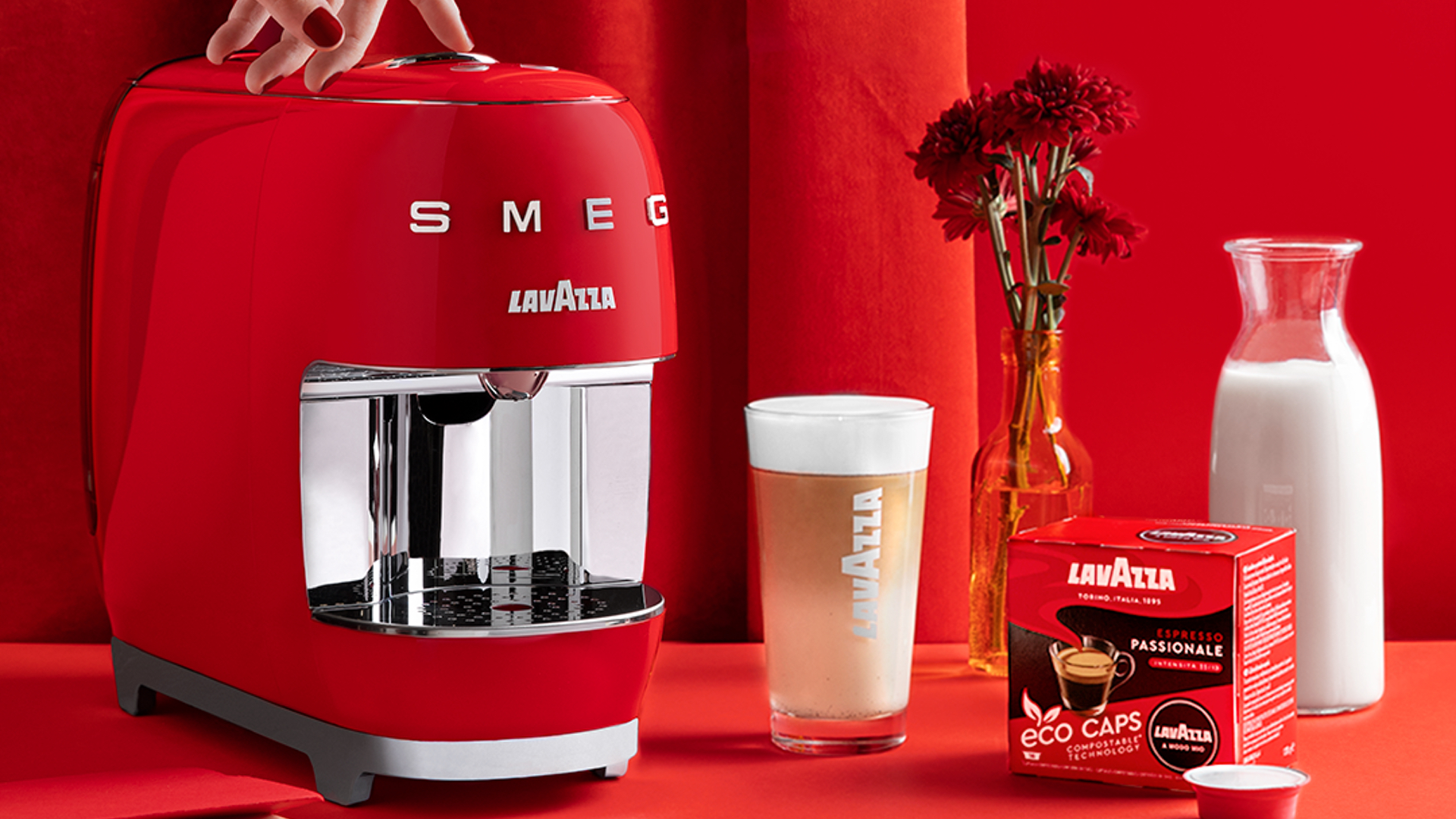

Derek Adams
The best pod coffee machine will make your life easier and tastier. With a pod coffee machine, you don't need to grind your own beans, spend an age fixing up your next coffee, or suffer low-quality results either. Instead, the best pod coffee machines speed up the coffee-making process without ruining the taste.
If I were to pick one reason why you should buy a pod machine, it would be that you get consistent results that are notoriously difficult to attain using standard espresso machines and even most bean-to-cup models. With a capsule machine, you simply load in the pod, hit the button and out comes a stream of strong crema-topped black gold every bit as punchy and flavoursome as the last one.
If you want something more professional, check out the best bean to cup coffee machines, but without further ado, let's take a look at T3's picks for the best pod coffee machines.
T3's Top 3
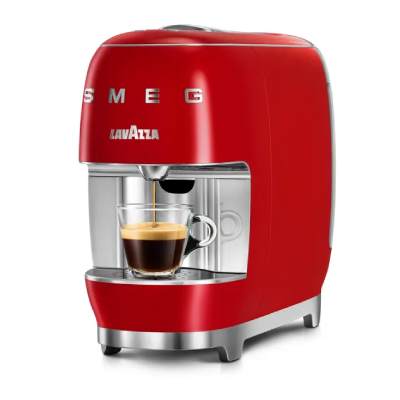
The best pod coffee machine overall
The Smeg Lavazza A Modo Mio is the best pod coffee machine, in terms of looks, performance and ease of use.
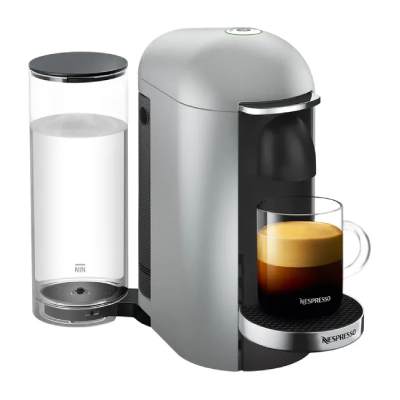
The best Nespresso pod coffee machine
If it's a Nespresso model you're after, the Nespresso Vertuo Plus is hard to beat.
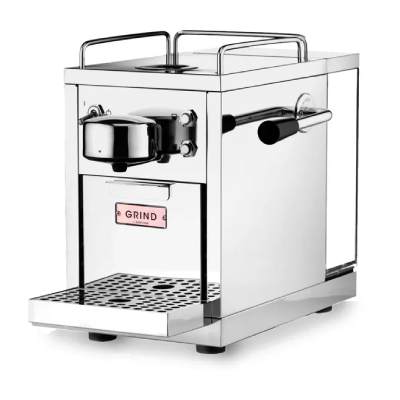
The best looking pod coffee machine
The Grind One is the stylish pod coffee machine we've seen that fits any kitchen aesthetic.

Beth is Home Editor for T3, covering style, living and wellness. Beth loves a good cup of joe, and she's tried all different types of coffee machines, including pod, bean-to-cup and drip makers. She's the go-to person if you need tips on how to buy the best pod coffee machine for you.
07/11/25: We've update the best pod coffee machine guide with more questions in our FAQs section.
Best pod coffee machines 2025
The best pod coffee machine overall
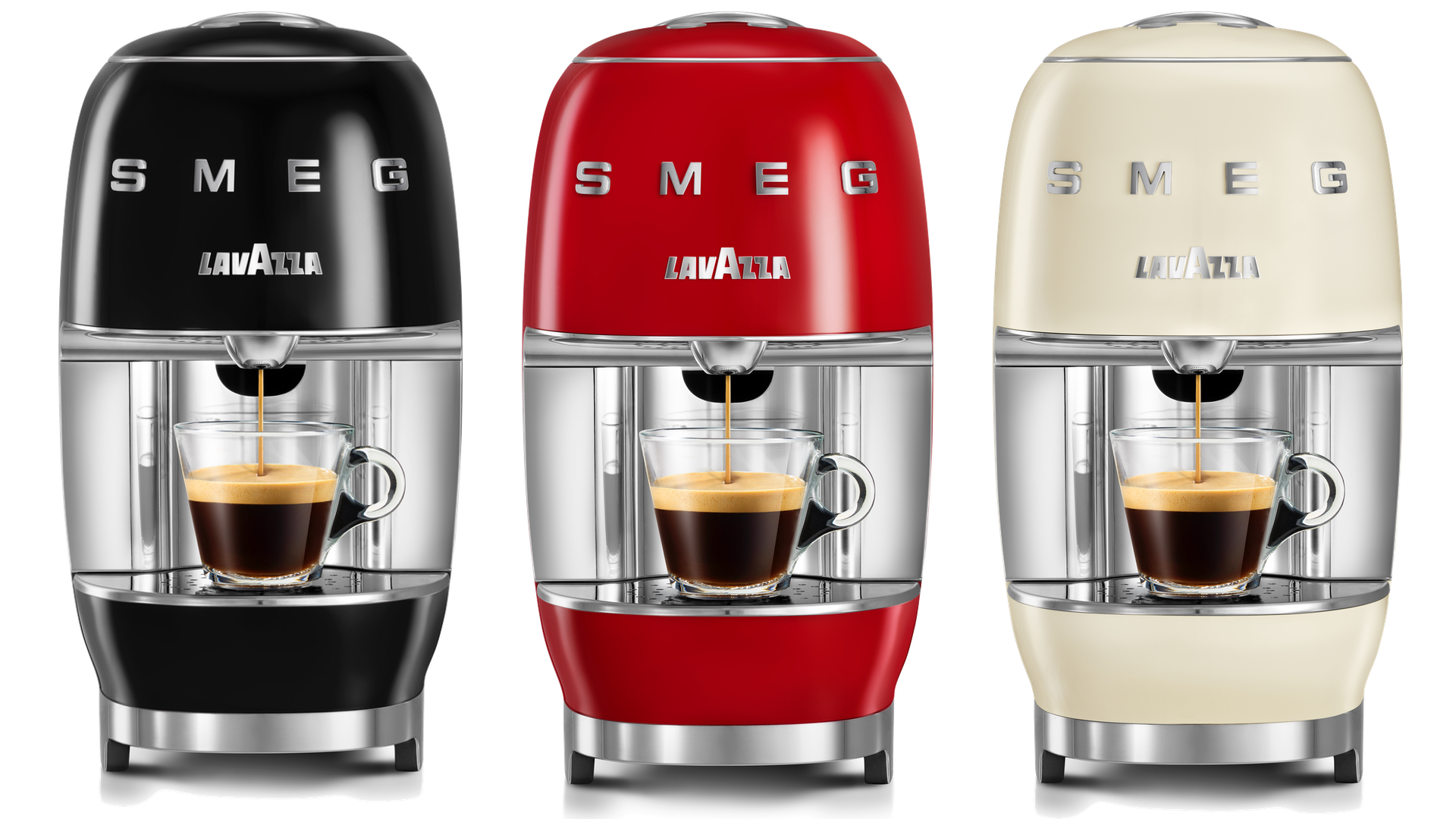

Specifications
Reasons to buy
Reasons to avoid
The Lavazza A Modo Mio system makes it much easier to enjoy a cup of Italy’s favourite espresso blend at home without the fuss of coffee granules being splattered all over the worktop.
This relative newcomer to the Lavazza roster is one of the most gorgeous looking machines in podland, and that makes it a shoo-in for kitchens of any design, from country to modern. It also happens to produce some of the best capsule-based espressos you will ever have the pleasure of passing over your tastebuds.
The Smeg ships with an ample 0.9-litre water reservoir and a large spent-capsule container so you should be able to make about ten espressos without heading for the sink or the recycling bin.
It’s simple to use, too. Just lift the chrome hatch, pop in a Lavazza pod (the Passionale blend is best) and tap either short or long shot. It takes only a minute to warm up but the extraction is completed in about 30 seconds; the machine produces about 10 bars of pressure in case you’re interested.
Read our full Smeg A Modo Mio Lavazza review for more details.
The best Nespresso pod coffee machine
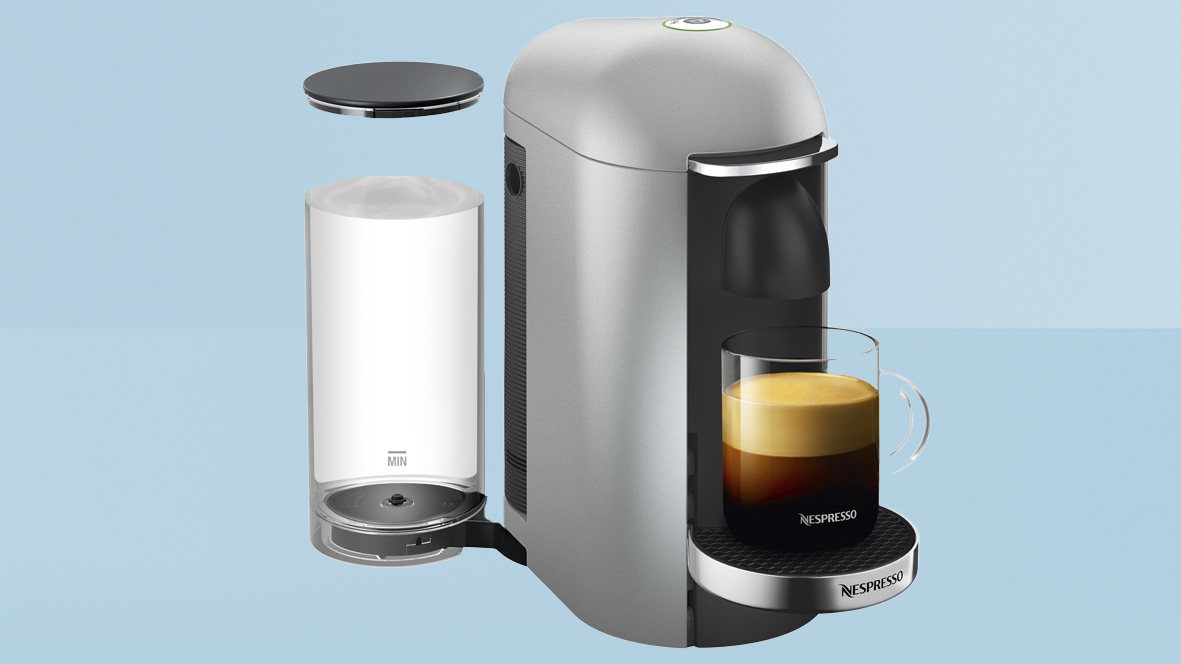

Specifications
Reasons to buy
Reasons to avoid
If you find standard Nespresso capsules are too small in size to produce a decent caffeine hit, consider the Nespresso Vertuo Plus. Nespresso’s Vertuo pod system is completely different to the standard Nespresso capsule system. For starters, the pods are almost twice the size and shaped completely differently so you can’t use a standard Nespresso pod in a Vertuo machine, and vice versa.
The best thing about the Vertuo system is that it’s capable of using different sized pods and this makes it a great choice for those who like a variety of coffees throughout the day. There are five capsule sizes in all, from Espresso and Double Espresso to Gran Lungo, Mug and extra large Alto.
So, what’s so special about this machine? Well it looks good for a start and comes with a monstrous 1.8-litre water tank that can be positioned behind or to either side of the machine depending on your worktop space. It also has the biggest used capsule bin in the business – enough for 13 large pods.
To use, simply tap upwards on the protruding silver disc and the whole lid moves up mechanically. Now pop in a pod blend and size of your choice and tap the top button. Every pod comes with its own unique barcode which instructs the machine to provide just the right amount of water and the optimum length of extraction. Uniquely, the Vertuo system uses Centrifusion technology (the capsule spins at up to 7,000rpm) instead of just steamy water under high pressure.
The result is the deepest, thickest, creamiest and silkiest crema you will likely ever get your lips around. Granted, some espresso purists will say it’s just a foam and not strictly a crema, which is true. However, for me it has the same consistency of a genuine crema, only it’s much deeper – like the head of a well-pulled Guinness draft.
Read our full Nespresso Vertuo Plus review and check out the best Nespresso coffee machine deals.
The best looking pod coffee machine
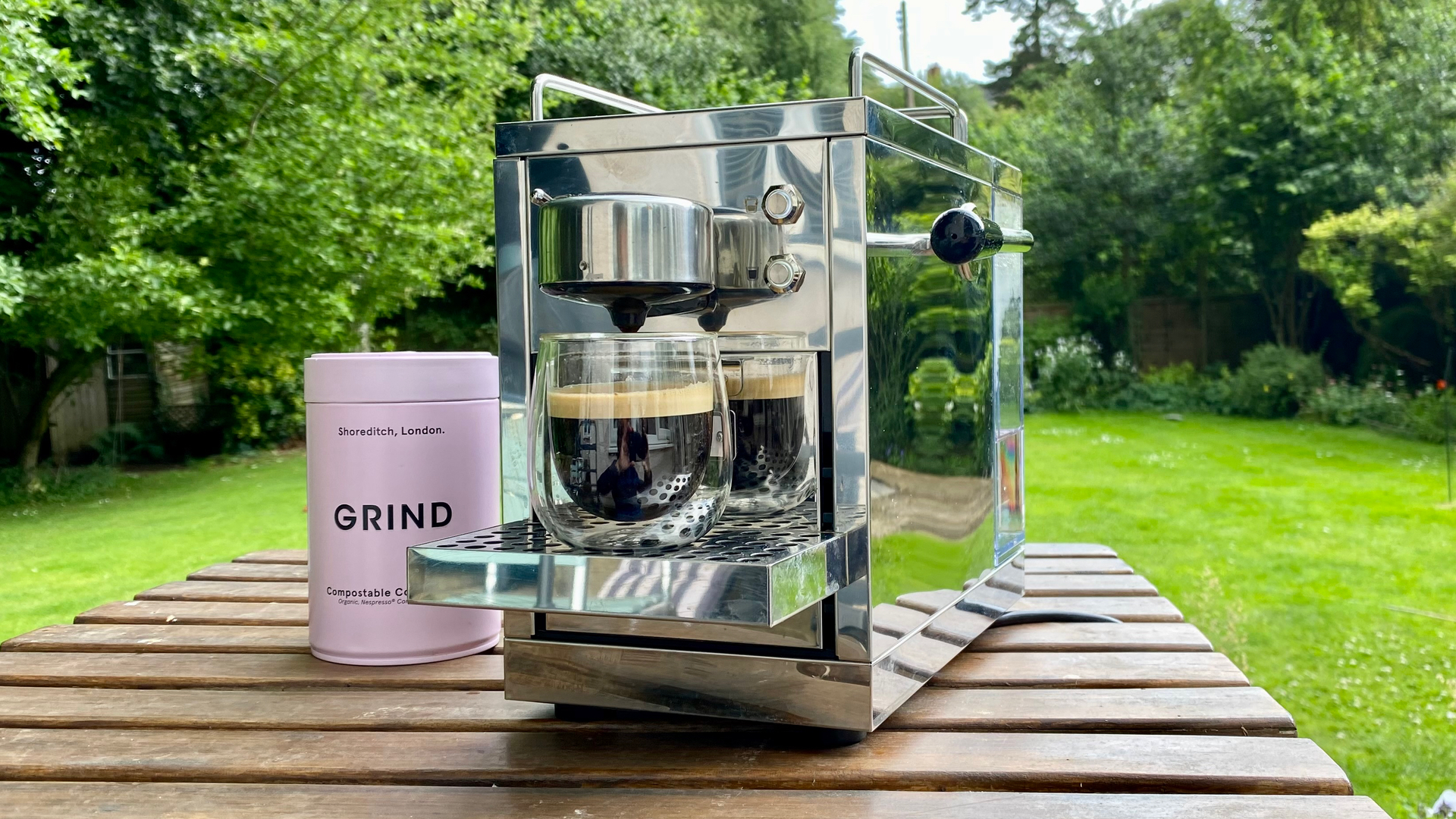

Specifications
Reasons to buy
Reasons to avoid
Grind is a sustainable coffee brand that produces a range of organic coffees in a variety of flavours and strengths, and this is its first capsule-based espresso machine for Nespresso pods.
Let’s start with the packaging first because the Grind One comes in a box so luxuriously pink in colour that you find yourself caressing it for about five minutes before proceeding to the opening ceremony. Once inside, the eyes are met with a square slab of silver that shouts class with a capital C. Alongside the different looking Smeg, this is one of the best looking espresso makers I’ve ever laid eyes on. It’s truly a stunner, from the vintage aircraft-style switches and chunky pod-engaging lever to the height-adjustable stainless-steel cup tray and protruding group head dispenser. Even the generously large 1.2-litre water container is a thing of rectangular beauty. Mind, at 18.6cm, this machine is wider than the majority.
To turn the Grind One on you have to flick a heavy-duty steel switch and then wait for a minute or so for it to warm up. Next, drop a pod into the top, pull the lever down until you feel it engage and select either a short or long shot by pressing one of the backlit buttons on the right. You can easily programme your preferred length of extraction by holding in one of the buttons until the coffee hits your sweet spot.
The Grind One extracts a mighty fine Nespresso that’s as good as any other machine on this page but its aesthetics place it much further up the list, and deservedly so. Nevertheless, being of the manual variety you will need to remember to turn the machine off yourself because it doesn’t have any kind of auto-off mechanism.
Grind produces its own range of Nespresso pods, too, and a beautiful pink tin to keep them in. Truth be told, the Dark Roast was too weak for me but the House Blend has a good depth of flavour even though it, too, may prove too weak in strength for barista-level connoisseurs. The machine, on the other hand, is a stupendous addition to the Nespresso range and is well worth checking out if you’re after an elegant retro-style unit that your guests will certainly notice.
Read our full Grind One review for more details.
The best pod coffee machine for milk-based drinks
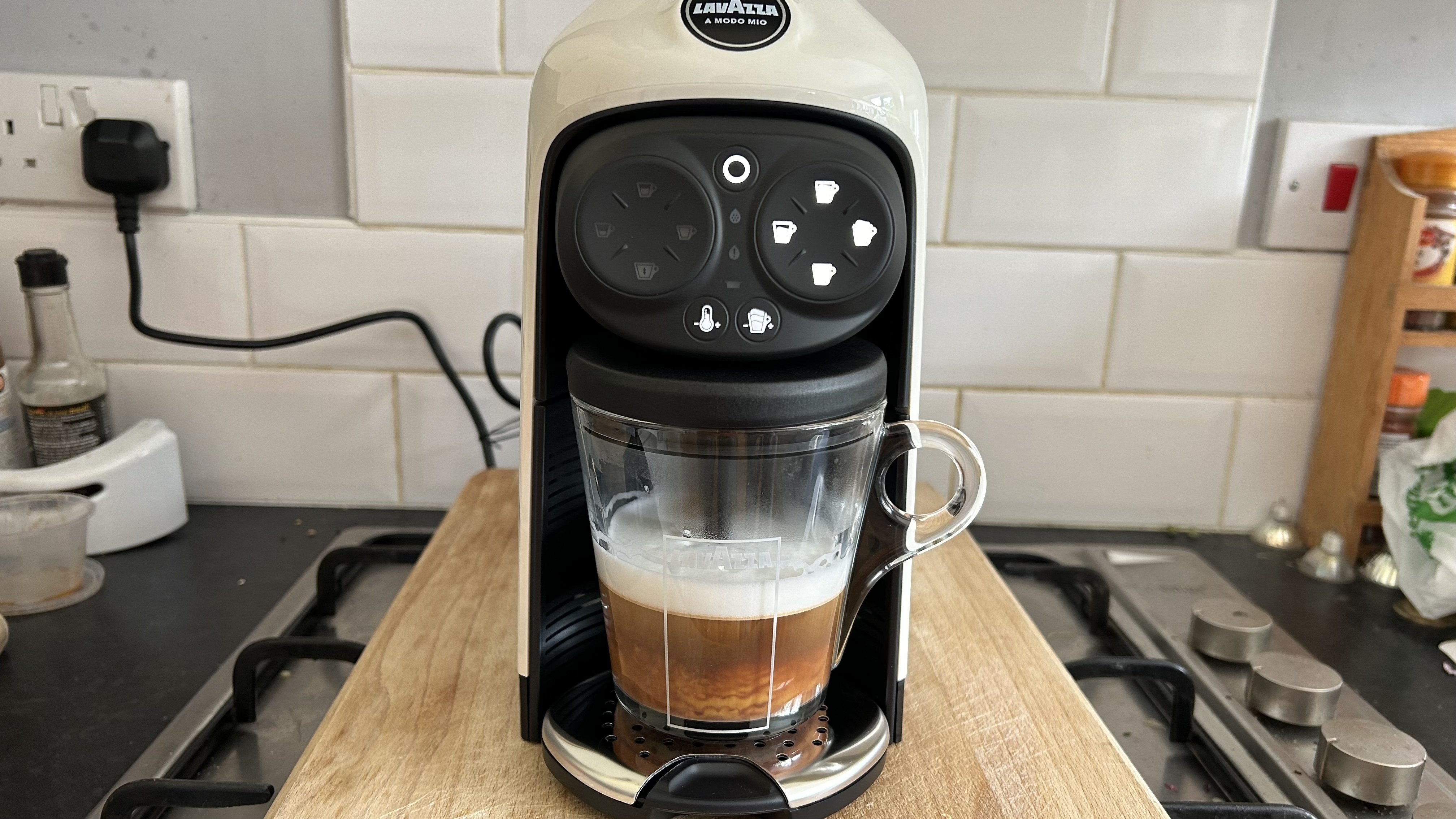

Specifications
Reasons to buy
Reasons to avoid
This stocky but stylish Lavazza model comes with an ingenious milk frothing system that doesn’t involve any fiddly wands or, indeed, any input at all from the user. For a straight espresso, simply drop a capsule into the top slot, pull down the handle, tap one of the three main extraction choices – single espresso, long espresso, long coffee – and out pops a delicious almost uncannily authentic Lavazza espresso replete with a rich, silky crema. Mind, be sure to place any cups far back on the adjustable plinth or the stream will miss the cup and pour straight into the excess tray. This is because the Deséa’s integrated milk frothing system uses the same area for its jug and internal wand instead of the usual stand-alone wand method.
To make a milky coffee – cappuccino, macchiato or latte – fill the provided glass jug with cold milk up to the level marked on the side of the vessel, push the whole assembly into the area you would normally place a cup, drop in a capsule and choose your preferred brew using the interface on the right. The milk will go through the frothing and heating process before a single dose of espresso is added to the mix. Rather cleverly, the espresso sinks straight to bottom so that when you pour it into your cup, the coffee pours out first followed by the creamy froth. If you never have milk with your espressos, perhaps consider the cheaper Idola model which doesn’t come with the milk frothing system.
The Deséa is narrow enough to fit on any work top (it’s just 14.5cm wide) and it comes with an ample 1.1-litre water reservoir that’s easy to remove. The spent capsule drawer meanwhile is large enough for about 10 pods – rather handily, an audio tone signals when the container needs emptying.
Lavazza capsules (available online and in most high street stores) cost around 31p a cup – among the cheapest on the market – and there are seven great-tasting blends to choose from. Best blends in my opinion? Passionale and Lungo Dulce produce top flight espressos time after time, and quickly too.
The best cheap pod coffee machine


Specifications
Reasons to buy
Reasons to avoid
This keenly-priced micro machine is the width of a coffee tin and couldn’t be easier to use. The 0.6-litre water tower is big enough for at least half-a-dozen cups (either long or short, depending on which button is pressed) but the used capsule collection drawer is tiny and only has room for five. If you step too far over the mark, I can guarantee the drawer will jam and you’ll struggle to get the damn thing open.
That aside, this little workhorse makes a blooming excellent espresso replete with lush crema and all for around 31p a hit. Top blend, top podder…
The best premium pod coffee machine
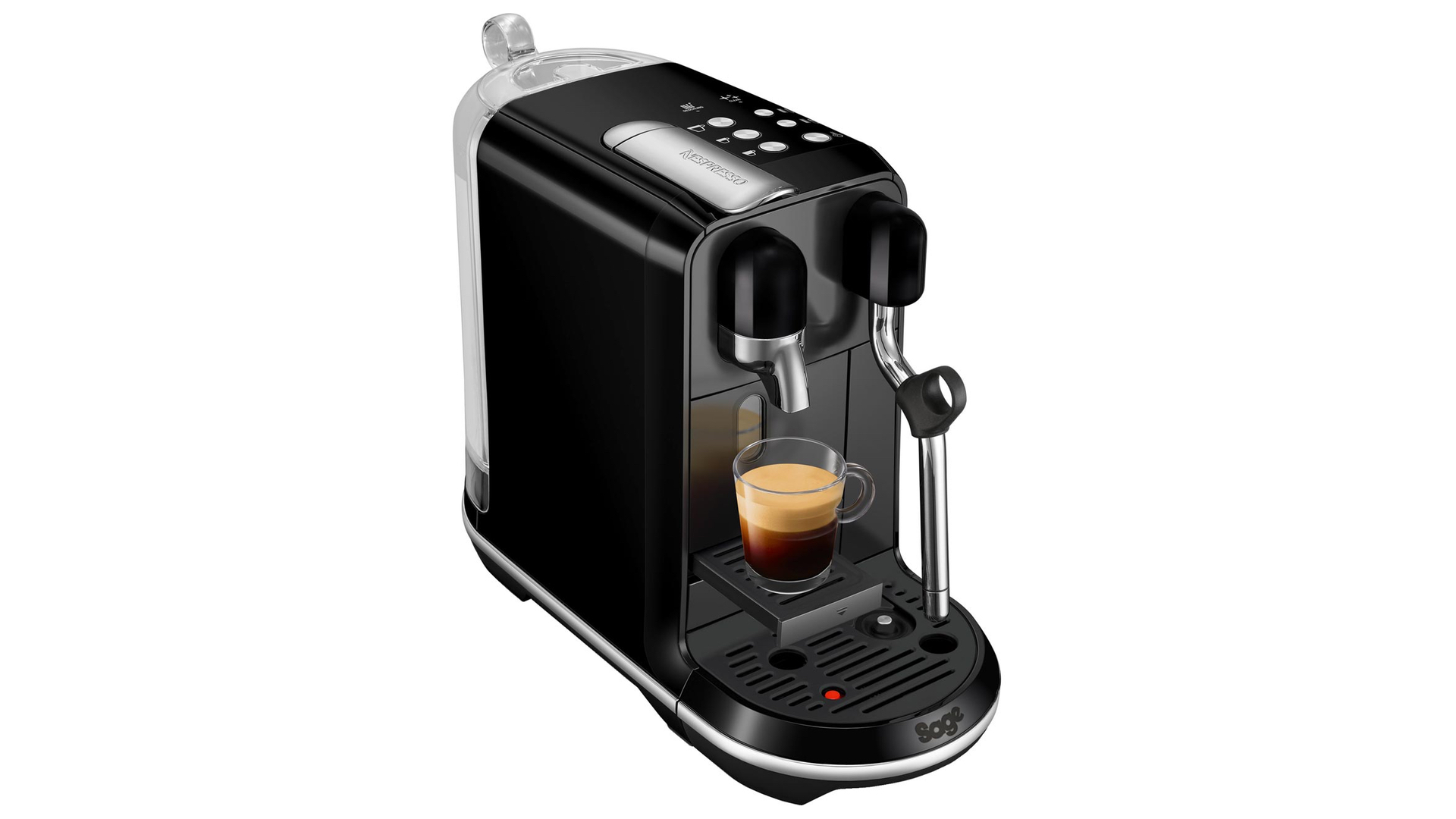
6. Sage Creatista Uno Nespresso
Specifications
Reasons to buy
Reasons to avoid
Sage has excelled with this premium-priced addition to the Nespresso roster of third-party machines.
The Creatista is superbly built, with a reassuringly large amount of metal used in the construction, but what impresses most here is the typically Sage-like, intuitive interface. There’s an LED panel on top that displays one of eight coffee styles from ristretto to latte macchiato, and it's so easy to use, my cat managed to whip up a flat white without even looking at the instruction manual.
The foaming wand, too, is excellent and almost entirely automatic – just set the amount of froth required and hit the button for anything from warm milk to a Matterhorn-style peak of rich, creamy froth.
The best portable pod coffee machine
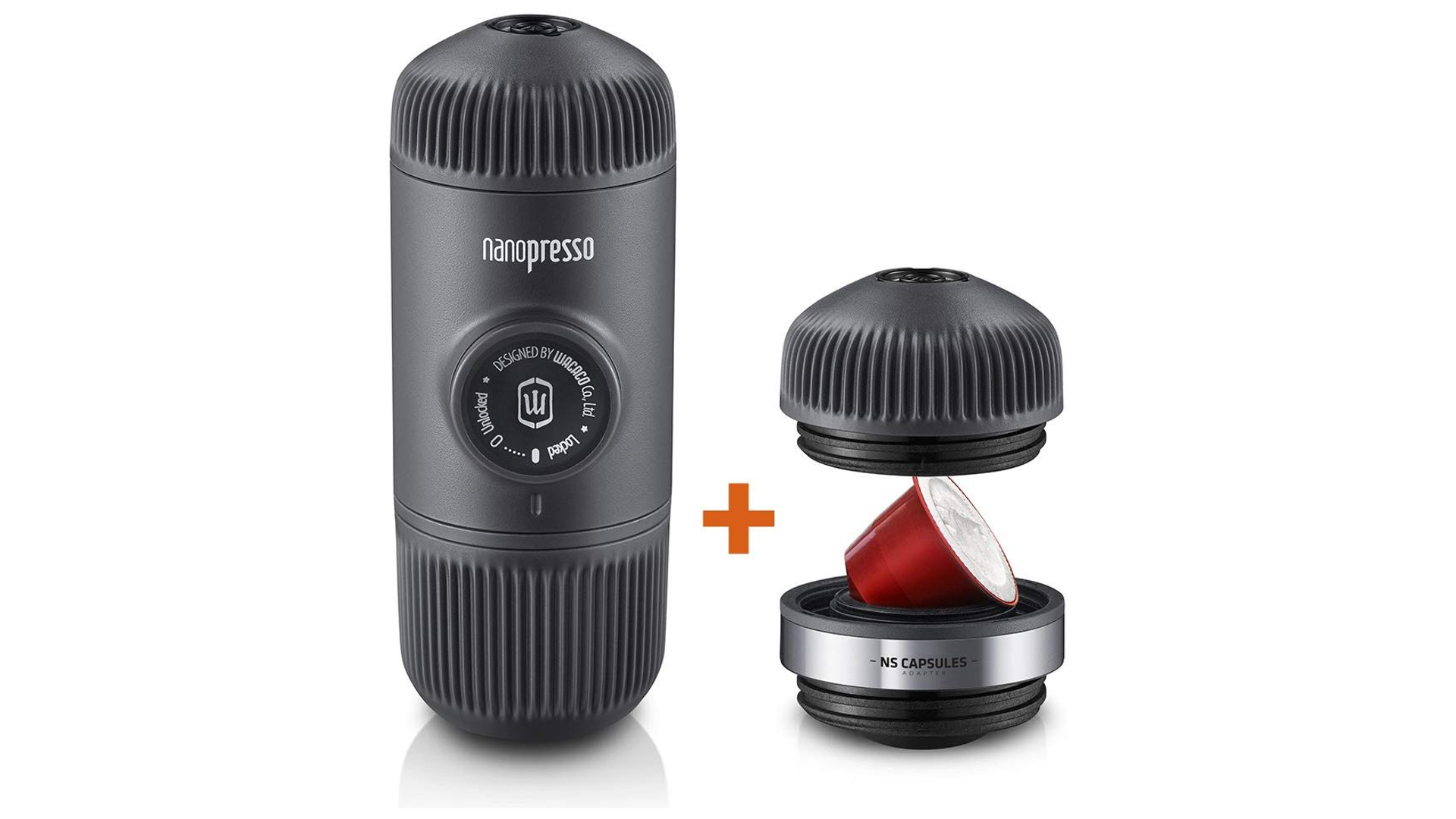
7. Wacaco Nanopresso Nespresso
Specifications
Reasons to buy
Reasons to avoid
Once you have a taste for real espresso nothing else will do. So, next time you’re on your travels, pack this remarkable hand-powered gizmo and you’ll never have to endure an insipidly crap hotel coffee ever again. You can even take it camping, up a mountain, into the desert – anywhere you can boil up some water.
With the aid of the optional Nespresso NS adapter (£20), this model produces espressos as rich and aromatic as any kitchen-bound machine on this page. Just fill the small chamber with boiled water, slap a capsule into the adapter, seal the lid and add a good dose of finger pressure to squeeze the piston closed. Boom, instant espresso with a proper dollop of thick, rich crema on top.
If other people’s coffee rarely meets your high expectations, you’re out camping in the wilds or visiting a relative who only drinks instant dishwater, pop one of these in the travel bag and you’ll never be without a proper caffeine fix. Highly recommended.
The best easy pod coffee machine
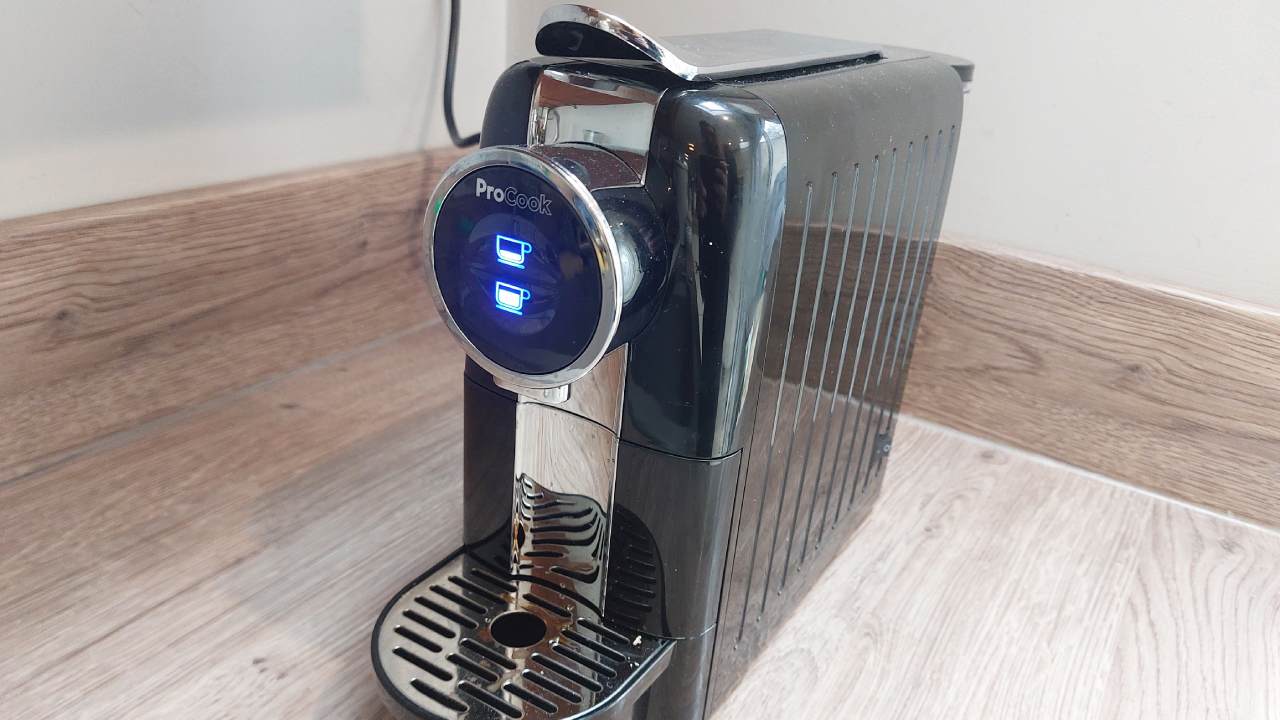

Specifications
Reasons to buy
Reasons to avoid
In general, pod coffee machines are pretty easy to use, as you just pop in a pod and you're away. But things can sometimes get a little fiddly, so we were impressed by how insanely easy the ProCook Coffee Pod Machine was to use.
The ProCook Coffee Pod Machine has three buttons, so it's pretty impossible to go wrong with it. It heats up quickly, is compatible with most pods on the market, and it has a compact and simple design that easily fits in your kitchen.
While it's easy to use and clean, the ProCook Coffee Pod Machine could sometimes get pods stuck within the mechanism. It didn't take our reviewer long to wrestle it out, but it's something to think about. Overall, it's an exceptional pod coffee maker and it doesn't cost too much, either. See our ProCook Coffee Pod Machine review for more details.
The best pod coffee machine for blends
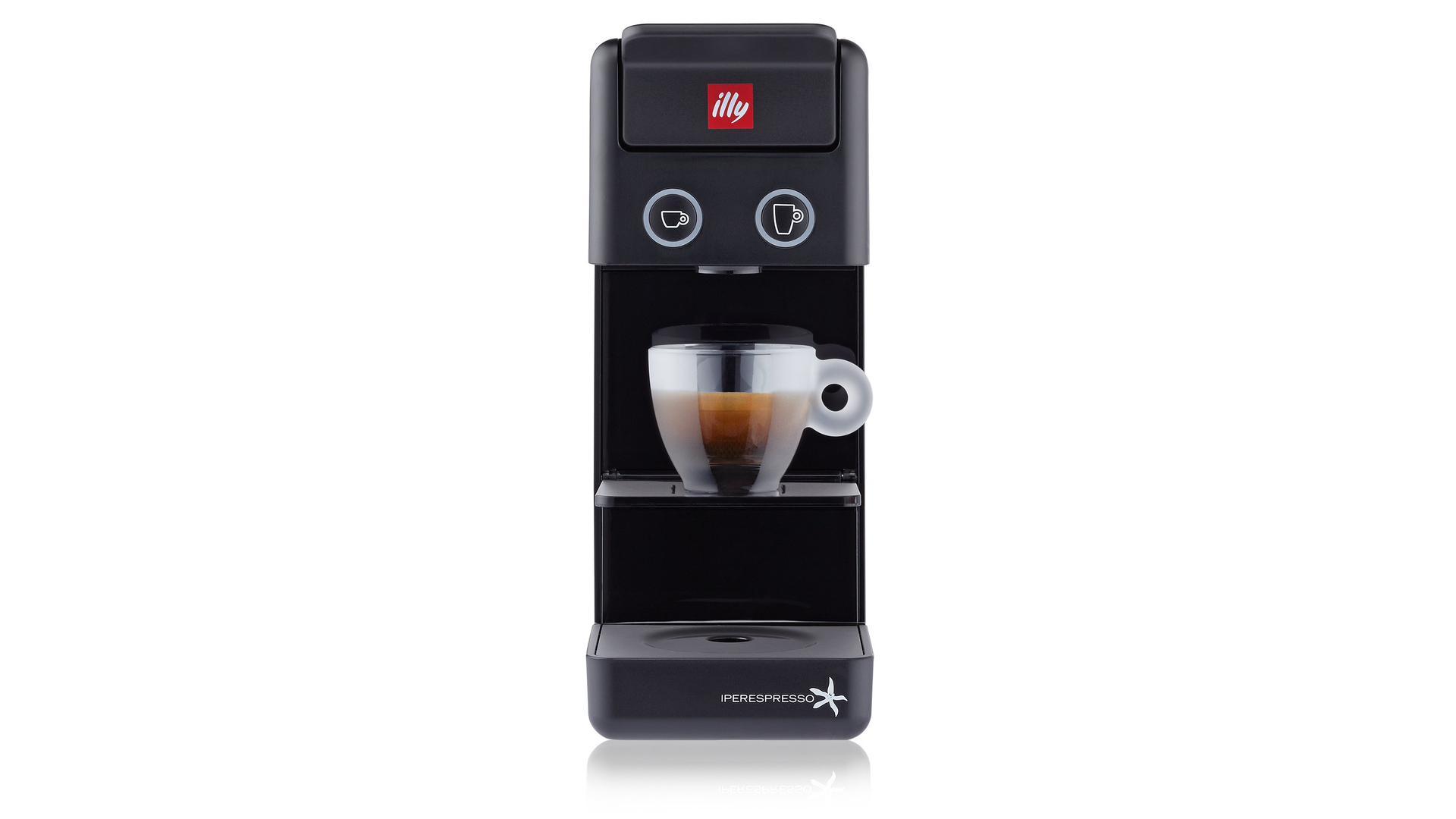
9. Illy Y3.2 Iperespresso
Specifications
Reasons to buy
Reasons to avoid
Any discerning coffee aficionado will agree that Illy makes one of the best domestic coffee blends on the market. Well, here’s a way to make an authentic Illy espresso without the complex production process of a manual espresso machine.
This model is available in the four colours – cream, black, blue and red – and at just 10cm in width, it’s one of the slimmest capsule coffee machines you can buy.
All pod machines take the guesswork out of making espresso and this one is no different. Lift the top flap (which automatically ejects the previously used pod), chuck in a new pod (choose from 16 different blends), close it and press either the big cup button or the small cup button. And that’s all there is to it.
The Y3 uses a unique two-stage extraction process and the coffee it dispenses is rich and rewarding. Mind, the capsules themselves cost from 43p per pod, which is quite steep. Illy’s innovative capsules seem less environment friendly than others even though the polypropylene plastic used is 100% recyclable.
If full-bodied flavour and a strong, palette-smacking kick are your prerequisites to a good espresso then make this model among your first ports of call.
The best pod coffee machine with steam wand
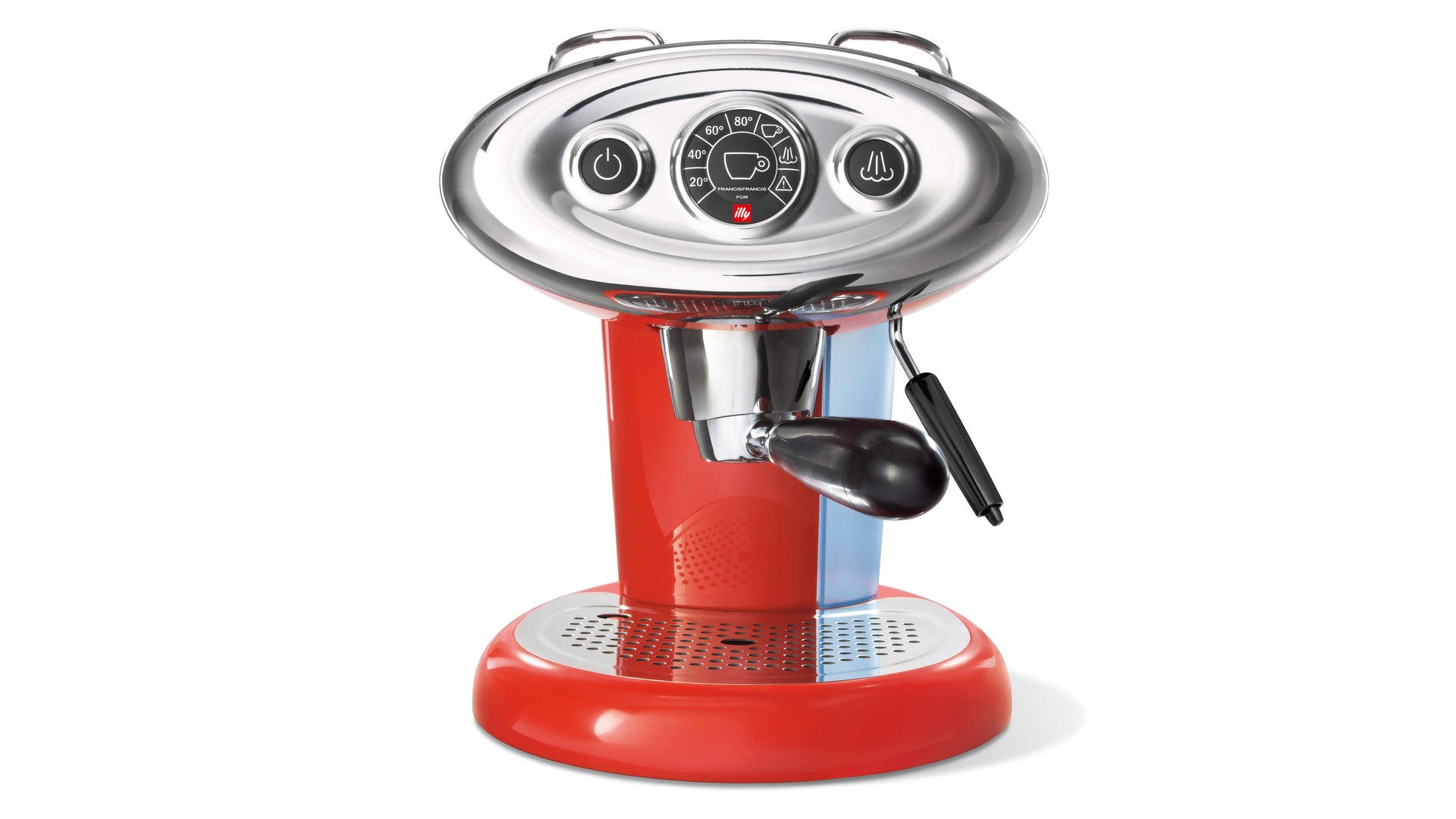
10. Illy X7.1 Iperespresso
Specifications
Reasons to buy
Reasons to avoid
Ditching the plastic of some of the more popular pod machines, FrancisFrancis has created a swish, colourful chrome machine with a fascia reminiscent of Wall-E the robot.
The X7.1 boasts an excellent Pannarello steam wand for frothing milk, a large one-litre water reservoir and an old-fashioned portafilter, but one that takes plastic Iperespresso capsules instead of coffee grounds. A simple touch of the centre button produces a rich, aromatic Illy espresso with a lip-smacking crema.
Illy capsules are more expensive than most brands (from 43p per pod) but, boy, they sure know how to make a gorgeously rich and velvety espresso blend.
The best basic pod coffee machine
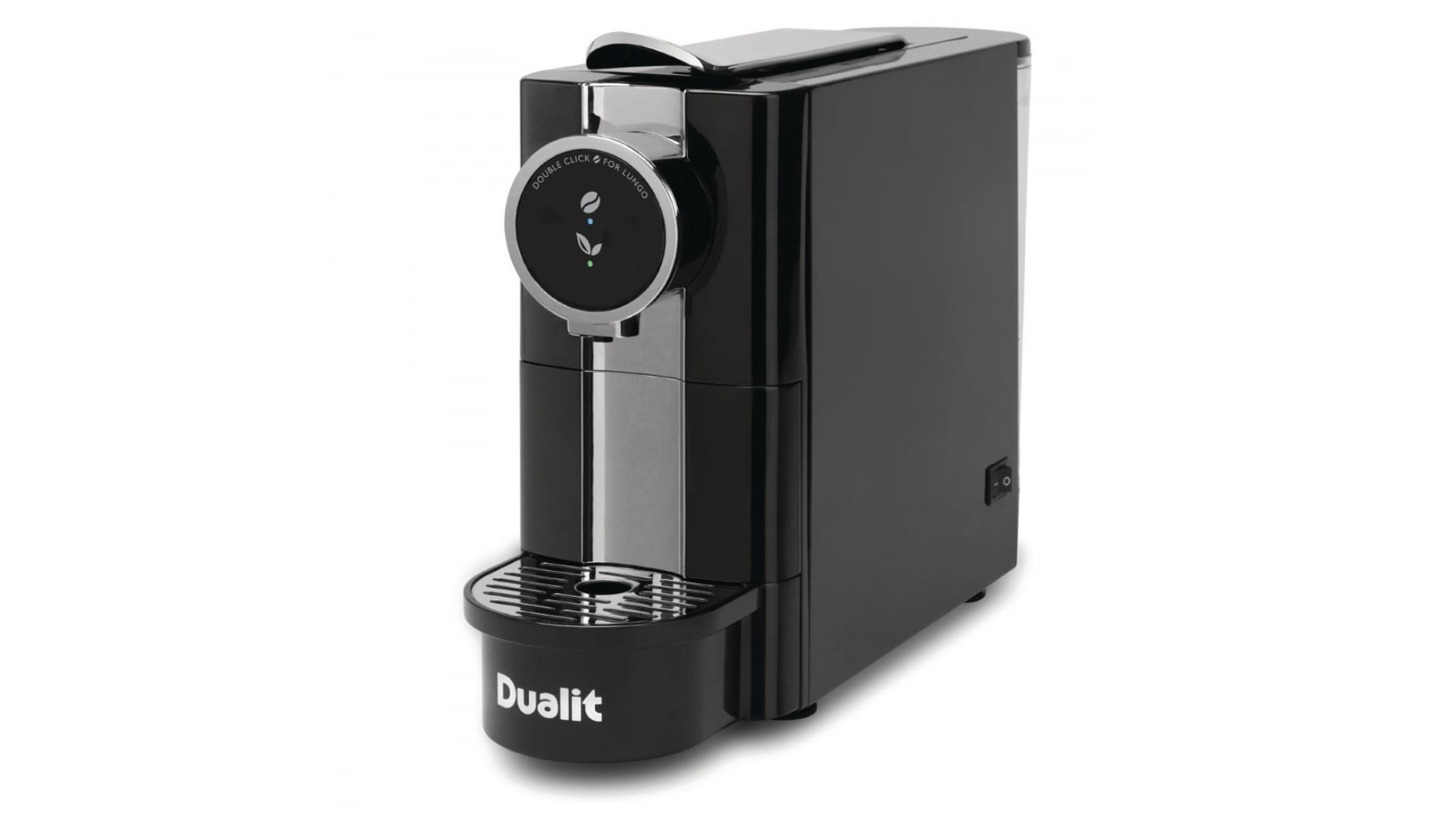
11. Dualit Café Plus
Specifications
Reasons to buy
Reasons to avoid
This Nespresso machine from Dualit doesn’t take up much space and is very easy to use – it comes equipped with a touch interface that provides a variety of extracts from espresso to Americano, plus a side-mounted milk frother for cappuccinos. It also heats up in 40 seconds flat – handy for those in a rush to get out of the house first thing in the morning.
On the downside, the Café Cino is noisy as hell and the metal cup tray rattles about, especially when used with a small espresso cup. But on the plus side, it produces as good an espresso as most machines on this page, so it’s still worth a punt.
Incidentally, like many third-party Nespresso pod manufacturers, Dualit also makes its own range of reasonably-priced coffee – and tea – pods that are usually cheaper than Nespresso’s own though not necessarily as tasty. Just thought you should know.
How to choose the best pod coffee machine
When you purchase a capsule machine, you’re essentially buying into a particular brand of coffee. Having tried all the major pod brands, my overall favourite brand is Lavazza (from 31p per pod), followed closely by Illy (from 43p). Nespresso (from 36p) takes third place for having pods I feel are a bit too small and, in many cases, too weak for my leathery palette. To illustrate this I cut open a Lavazza and Nespresso pod and measured the contents. The Lavazza contained 7 grams of coffee while the Nespresso came in at just 4 grams.
There is another Nespresso option, however, and it’s called the Vertuo system. Instead of just one standard pod size, the Vertuo uses five different sizes to satisfy a wide range of coffee preferences: Espresso, Double Espresso, Gran Lungo, Mug and extra large Alto. You’ll also be pleased to learn that the Vertuo’s standard espresso capsule’s contents weigh a much more respectable 7g – just like the Lavazza pods – with the larger pods weighing in at substantial 13 grams. Nespresso Vertuo pods retail from 43p per pod.
As with any coffee-making machine, we would recommend using only bottled water with your pod system because a) it tastes better and b) there’s less chance of the internals getting clogged by limescale.
It used to be the case that standard Nespresso capsules – the most popular variety among poddists – were only available online or in the brand’s own boutiques, so you if you ran out you’d be without your morning lift. However, Nespresso capsules are now available via other means, albeit via a host of third parties like Grind, Starbucks, Notes, Pret and Roar Grill. Even Sainsbury’s is in on the act.
It’s also important to note that many of the milkier and more novelty type drinks from some pod-related brands are not amazing. If you want richly textured milk in your flat white, cappuccino or latte, use proper milk because these aren’t going to satisfy. You can greatly improve matters by getting a high quality milk frother from Dualit, Lavazza or Nespresso itself.
For Americanos, espressos and other, more purist drinks that don’t rely on milk, results range from good to excellent. These machines can also serve as a "gateway drug" to a more heavy-duty, non-pod coffee maker.
How we test pod coffee machines

We don't do laboratory testing at T3, and the best way we can think of to review pod coffee makers is… to make and drink coffee with them. It's a tough job but someone has to do it.
Once we call in the pod coffee machine, we assemble it and judge it by its looks (we know you shouldn't but it's important!). Once it's ready to go, we go through the entire coffee making process, including the water tank, pod insertion, coffee extraction and milk frothing where required. We also look at things like type of pods that are compatible and how easy the machine is to clean.
We have rigorously tried and tested all of the pod coffee machines on this list in the same way that you would use them at home.
Want to know more? Discover how we test at T3.
FAQs
What type of coffee pods are there?
There are many different coffee pods out there, but it's most important to check what pods are compatible with your machine. As Nespresso is so popular, its pods work with most machines and brands, but even then, Nespresso has special types of pods for certain machines, so you need to make sure you get the right pods for your machine.
Coffee pods are mainly broken up by shape, material and coffee type. The most common pods you'll find are Nespresso Original, Nespresso Vertuo, Lavazza, Keurig and Starbucks pods.
How long should a pod coffee machine last?
The average pod coffee machine should last anywhere from 5-10 years. Of course, this depends on the manufacturer and model, and how often you use and clean your pod coffee machine. Luckily, most manufacturers offer warranties so if your machine breaks, you should be able to replace its completely or buy any missing or broken parts.
How do I clean a pod coffee machine?
It's very easy to clean a pod coffee machine, but it's important that you're doing it regularly so you don't break it. Stick to cleaning it every three months so it can last up to 10 years.
To clean a pod coffee machine, start by flushing it, emptying trays and tanks, descaling, cleaning the pod chamber and wiping the exterior. For a step-by-step tutorial, see how to clean a pod coffee machine for more.
Are pod coffee machines good for the environment?
Today's pod coffee machines have gotten better for the environment compared to older models. Single-use pods are wasteful but most can now be recycled, and you can choose pods that are compostable.
Why do some coffee pods have bars on them?
Some coffee pods have barcodes on them to tell you the amount of water and milk is needed to make the drink.
Reviewer panel

Bethan Girdler-Maslen is T3's Home Editor and a self-confessed caffeine addict. She's tried pod, espresso, bean-to-cup and drip coffee makers, including models from Sage, ProCook, Nespresso and more.

Lizzie Wilmot is T3's Home Writer, and she loves any hot beverage. She's tried many pod coffee machines, including models from Nespresso, Lavazza, De'Longhi and more.

Derek specialises in home appliances, and has reviewed most of the pod coffee machines in this guide, from Grind to Smeg and beyond.

Rob Clymo has been a tech journalist for many years, and he always enjoys testing kitchen appliances for T3, including pod and bean-to-cup coffee machines.
Get all the latest news, reviews, deals and buying guides on gorgeous tech, home and active products from the T3 experts

Beth is Home Editor for T3, looking after style, living and wellness. From the comfiest mattresses to strange things you can cook in an air fryer, Beth covers sleep, smart home, coffee machines, watches, grooming tools, fragrances, gardening and more.
In her spare time, Beth enjoys running, reading, baking and attempting craft projects that will probably end in disaster!